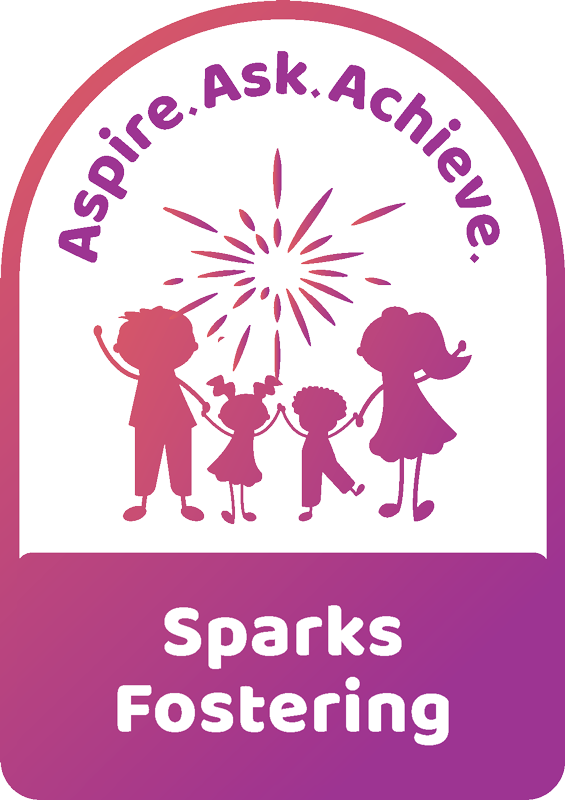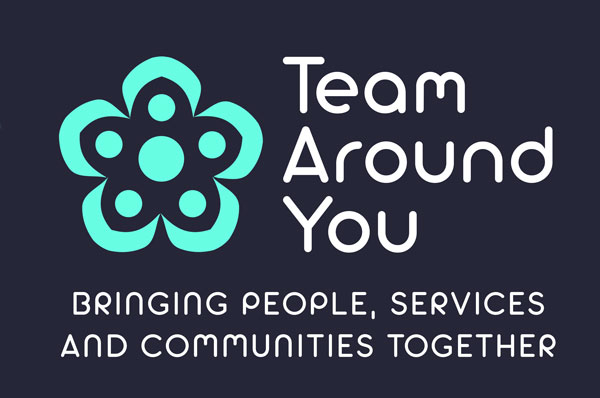Plans & Reviews
planning for the care of the child
Care planning and case reviews are meetings involving children who are looked after, their families, the child’s carers and the team around the child, in order to plan for the care of the child and to review that plan on a regular basis. Assessing the needs of children and deciding how best to meet those needs is a fundamental part of social work with looked after children.
Principles of planning
Clarity and transparency in the plans written for the child are essential in order that it can be understood by the child (subject to their age and understanding), the child’s parents and wider family, the child’s carer and a range of professionals and practitioners who are supporting the child and family. In order to achieve this the plans should:
- Describe the identified developmental needs of the child and the services required to meet those needs, including services to be provided to family members;
- Include specific, achievable, child-focused outcomes intended to safeguard and promote the welfare of the child and identify how progress will be measured;
- Include realistic strategies and specific actions to bring about the changes necessary to achieve the planned outcome;
- Clearly identify and set out the roles and responsibilities of family members, the child’s carers and practitioners (including for example GP, nurse and designated teacher), and the frequency of contact of those practitioners with the child, the child’s carer and/or family member; and
- Describe the contingency arrangements if the proposed plan for the child is not achievable, in order to reduce delay.
As part of the assessment process, it is essential to consult all those concerned with the child. The need for consultation should be explained to the parents and the child. The responsible authority should coordinate the involvement of all relevant agencies and all the individuals who are significant in the child’s life. Before making any decision with respect to a child whom they are looking after or propose to look after, the responsible authority should, as far as is reasonably practicable, ascertain the wishes and feelings of: the child; their parents; any person who is not a parent of the child but had parental responsibility for them; and any other person whose wishes and feelings the authority consider to be relevant; regarding the matters to be decided.
Intervention
The critical issue for practitioners and their managers is the decision about which interventions are likely to be most effective for a particular child in order to achieve the best possible outcome in the circumstances.
The nature of the intervention will depend on the identified plan for the child in the context of the assessment of the child’s developmental needs. The following questions should be addressed in considering the most appropriate intervention:
- What are the options for interventions which might help to support strengths or meet identified needs?
- What resources are available?
- To which agency or professional and approach is the child most likely to respond?
- Which intervention is most likely to produce the most immediate benefit, and which might take more time?
- What should be the sequence of the interventions and why?
- In the context of a plan for a transition to another home (e.g. to birth family, another fostering home, or to independent living), what is the likelihood of achieving sufficient change within the child’s timeframe?
Review
The process of review is ongoing and starts from the monitoring of an existing plan. It’s important to distinguish between reviewing as a process of continuous monitoring and reassessment, and the case review, which is the event when a child’s plan may be considered, reconfirmed or changed, and such decisions agreed and recorded.
Careful judgement is required to ensure that the timing of a formal review reflects a child’s individual needs, the objectives of the plan and takes account of diversity. Key issues to be addressed in the review process are:
- The child’s participation;
- The appropriate involvement of other agencies;
- Supervision and oversight by responsible managers; and
- The extent to which progress is being made towards achieving the identified outcomes.
Corporate parenting
The responsibility of local authorities in improving outcomes and actively promoting the life chances of children they look after has become known as ‘corporate parenting’ in recognition that the task must be shared by the whole local authority and partner agencies. The role of the corporate parent is to act as the best possible parent for each child they look after and to advocate on the child’s behalf to secure the best possible outcomes.
Looked After Reviews
The aim of the review is to assess how far the care plan is addressing the child’s needs and whether any changes are required to achieve this. The focus of the first review meeting will be on examining and confirming the plan. Subsequent reviews will be occasions for monitoring progress against the plan and making decisions to amend the plan as necessary, to reflect new knowledge and changed circumstances.
The first review is held within 20 days of the child becoming looked after; the second review is a maximum of 3 months after the first review; subsequent reviews are at least every 6 months after that. A care review should also be held before a child/resident is moved to another home (except in case of emergencies when there isn’t time to arrange a review – in which case a review should be held as soon as possible).

The specified frequency of reviews is a minimum standard. A review should take place as often as the circumstances of the individual case require. Where there is a need for significant changes to the care plan, then the date of the review should be brought forward. No significant change to the care plan can be made unless it has been considered first at a review, unless this is not reasonably practicable.
The review must be child-centred and discussion should take place between the social worker and the child at least 20 working days before the meeting about who the child would like to attend the meeting and about where the meeting will be held. This allows time for subsequent discussion about attendance and venue between the I.R.O. and the social worker and for written invitations to be sent out. The involvement of the child will be subject to their age, understanding and welfare.
The option of a child being accompanied to a review meeting by an advocate should be considered. In exceptional circumstances the social worker, in consultation with the I.R.O. may decide that the attendance of the child or parent (if this would not be in the interests of the child) at all, or part of, the review meeting will not be appropriate or practicable. However, the anxieties of professionals should not be the reason for excluding a child or the child’s parent from a review. Alternative arrangements should be considered if a parent or child is excluded from a review, a written explanation of the reasons should be given. Other arrangements should be made for their involvement in the review process, and details of this should be placed on the child’s case record.
In addition to the parent and child, the child’s carer should be invited. The carer provides day-to-day parenting for the child and cannot do this effectively and deliver the actions set out in the placement plan if the carer is not part of the care planning and decision-making process. There may be exceptional circumstances where the social worker, in consultation with the IRO, decides that the attendance of the carer at all or part of the review meeting will not be appropriate or practicable. Where this is the case, a written explanation of the reasons should be given and other arrangements should be made to ensure that the carer is able to contribute to the process and decisions taken at the review. Details about the reasons why the carer is excluded from the process and a record of their input should be placed on the child’s records.
Other people with a legitimate interest in the child should also be invited if they have a contribution in the discussions at the review meeting. The attendance of such people should always be discussed with the child before invitations are made. It may be appropriate where the contribution from such people is strictly factual for the information to be provided in writing or at a separate meeting.
Where a long term plan is in place, a small group (those consistently and constantly involved with the child) should be identified as essential attendees at the next and subsequent review meetings. In the majority of cases, the group will consist of the social worker, the child, parents, the I.R.O. and the carer (and are referred to as the ‘core group’). This will vary according to the circumstances of the individual case.
Where a child is placed in a long-term foster placement and has been in this placement for more than a year, consideration should be given to whether it is necessary to hold a meeting as part of each review. The child’s social worker should consult with the IRO and the child (where appropriate to age and understanding) in reaching a decision about holding a meeting. The consultation, information gathering and review process will continue on a six monthly cycle. In circumstances where it is agreed that a meeting will not be held as part of every review, a meeting should be held at least once a year. The factors leading to the decision to hold review meetings on a less frequent basis should be recorded in the child’s care plan.
Independent Reviewing Officer (I.R.O.)
The IRO appointed for the child is responsible for monitoring the performance of the responsible authority functions in relation to the child’s case. The intention is to enable the I.R.O. to have an effective and independent oversight of the child’s case to ensure that the care plan represents an effective response to the assessed needs of the child and that progress is being made towards achieving the identified outcomes.
Between reviews, if the care plan continues to meet the needs of the child, there may be no need for any communication between the IRO and the social worker or the child. However, in the event of a significant change/event in the child’s life, the social worker must inform the I.R.O.. Such changes include:
- A proposed change of care plan for example arising at short notice in the course of proceedings following directions from the court;
- Where agreed decisions from the review are not carried out within the specified timescale;
- Major change to the contact arrangements;
- Changes of allocated social worker;
- Any safeguarding concerns involving the child, and outcomes of child protection conferences, or other meetings that are not attended by the I.R.O.;
- Complaints from or on behalf of the child, parent or carer;
- Unexpected changes in the child’s placement provision which may significantly impact on placement stability or safeguarding arrangements;
- Significant changes in birth family circumstances for example births, marriages or deaths which may have a particular impact on the child;
- If the child is charged with any offence leading to referral to youth offending services, pending criminal proceedings and any convictions or sentences as a result of such proceedings;
- If the child is excluded from school;
- If the child has run away or is missing from an approved placement;
- Significant health, medical events, diagnoses, illnesses, hospitalisations, or serious accidents; and
- Panel decisions in relation to permanency.
This list is by no means exhaustive and there may be many other circumstances in which the I.R.O. may request that a review be convened. Parents and children should also be consulted about the need for an additional review.
The I.R.O. must speak to the child in private in advance of the meeting(s) about the matters to be considered, unless the child refuses to do so or the I.R.O. considers it inappropriate, having taken into account the child’s age and understanding.
The I.R.O. must be satisfied that the wishes and feelings of the child’s parents, any person who is not a parent but who has parental responsibility and the current carer (foster carer or registered person in respect of a children’s home) have been taken into account as part of the review process.
Care plans
The Care Plan is a document which sets out in detail the plans for the child or young person including type of placement, plans for the future, health, schooling, and how daily care and support should be provided.
The care plan will contain information about how the child’s current developmental needs will be met as well as the arrangements for the current and longer term care for the child. It ensures that there is a long term plan for the child’s upbringing (referred to as ‘the permanence plan’) to which everyone is working, including the team around the child, the child and, where appropriate, the family.
There should be clarity in the care plan, particularly about the desired outcomes for the child and those expected from services and other actions identified. This clarity will support effective reviews of the child’s case to monitor the progress made towards meeting the short and long term goals for the child and their family and the child’s carers.
There are specific requirements regarding the preparation of the care plan and its content. It is important that the care plan records information which will help the child, parent or the child’s carer understand why decisions have been or are being made. The care plan should set out:
- The information about the long term plan for the child, including timescales (the permanence plan).
- The arrangements to meet the child’s needs in line with the child’s developmental needs.
- Arrangements for contact, including contact with a brother or sister who is also looked after but not placed with the child and contact with a parent and anyone else with parental responsibility.
- Details of the placement plan and why the placement was chosen.
- The name of the child’s IRO.
- Details of the health plan and personal education plan (PEP).
- The wishes and feelings of relevant people about the arrangements for the child.
- The wishes and feelings of these people about any proposed changes to the care plan.
Sparks Fostering supports foster carers to play an active role contributing to the child’s care plan and placement plan, in conjunction with the responsible authority. Foster carers are supported to ensure that plans for children remain in the child’s best interests.
Sparks Fostering contacts the responsible authority to request statutory reviews or visits if these are overdue for any child, or if a review is needed.
Permanence planning
One of the key functions of the care plan is to ensure that each child has a plan for permanence by the time of the second review. Achieving permanence for a child will be a key consideration from the day the child becomes looked-after.
Permanence is the long term plan for the child’s upbringing and provides an underpinning framework for all social work with children and their families from family support through to adoption. The objective of planning for permanence is therefore to ensure that children have a secure, stable and loving family to support them through childhood and beyond and to give them a sense of security, continuity, commitment, identity and belonging. The permanence planning process, informed by multi-agency contributions, will identify which permanence option is most likely to meet the needs of the individual child, taking account of the child’s wishes and feelings.
A range of options for permanence exist, all of which can deliver good outcomes for individual children:
- For many children, permanence is achieved through a successful return to their birth family, where it has been possible to address the factors in family life which led to the child becoming looked-after;
- For other children routes to permanence outside the care system may include family and friends care, particularly where such care can be supported by a legal order such as a child arrangement order, special guardianship order or in a few cases, adoption;
- Other non-family and friends carers supported by a legal order such as a child arrangement order or special guardianship order.
- For those children who remain looked-after an important route to permanence is long-term foster care.
Where the permanence plan for the child is long-term foster care this may be where the current short-term placement is assessed to meet the long term needs of the child for permanence or where a new placement is identified for the child as a result of an assessment and matching process.
Placement plan
When a suitable placement has been identified for the child the placement plan will set out in detail how the placement is intended to contribute to meeting the child’s needs as set out in the care plan. The placement plan is concerned both with what may need to happen in the placement to achieve the permanence plan and with the way in which a child’s needs will be met on a day to day basis. It is essential that the placement plan is developed in partnership with the child (where appropriate), the child’s carer and the parent as well as the social worker to ensure that the contribution required of all parties for the success of the placement is clearly recorded.

The placement plan forms part of the child’s care plan and must be drawn up before the child is placed, or if this is not possible, within five days of the start of the placement.
An effective placement plan includes the following information:
- Health needs of the child and details of health providers (such as GP and dentist). It is important to ensure they have adequate information about allergies, current medication and the treatment of any health conditions.
- Educational needs of the child, including details of education provider, details of the designated teacher and details of any special educational needs (if relevant).
- Emotional and behavioural needs of the child (including information about any behaviour which was of concern in a previous placement and appropriate strategies for dealing with the behavioural needs).
- Agreed personal allowance for the child: Children receive a personal allowance appropriate to their age and understanding.
- Name, contact information and details of: the Independent Reviewing Officer; Independent Visitor (if appropriate), allocated children’s social worker; and (for children age 16 or over) details of personal adviser.
- Delegated authority (the child’s social care may have a template which they have completed; alternatively the Sparks template may be used).
Clarity and specificity in the placement plan will ensure that the carer understands the child’s likes, dislikes and routines, and reduce the potential for disagreements which may arise in situations where decision-making on behalf of children may be the responsibility of different people at different levels in the organisation such as the foster carer, the social worker, or managers. Lack of clarity about who does what can lead to role confusion and placement breakdown.
Many children find it difficult to settle in a strange environment, feelings which are likely to be exacerbated if the start of the care episode has been rushed or traumatic. Carers can help children feel at home if they can maintain some of the routines to which they have been accustomed. It is therefore helpful to record information about bedtimes, mealtimes and so on, which can be passed on to carers.
Health assessments
The responsible authority is required to make arrangements for a registered medical practitioner to carry out an assessment of the child’s state of health and provide a written report of the assessment. The aim of the assessment is to provide a comprehensive health profile of the child, to identify those issues that have been overlooked in the past and that may need to be addressed in order to improve the child’s physical and mental health and wellbeing, and to provide a basis for monitoring their development while the child is being looked after.
A copy of each report must be given to the child, subject to the child’s age and understanding, the parents (unless inappropriate in relation to the child’s care plan) and the child’s carers and the child’s Independent Reviewing Officer.
The first assessment should take place and the written report be completed before the child is first placed by the local authority. If this is not reasonably practicable, then the assessment and a written report should certainly be complete before the first review of the child’s case.
Health assessments should take place:
- at least once every six months in the case of children aged under five; and
- at least once every 12 months in the case of children aged five and over.
If a health assessment has been carried out within the three months prior to the commencement of the placement and the local authority has received a written report that meets statutory requirements, then an assessment does not need to be carried out before the placement or in time for the first review but the cycle for future health assessments must start from the date of the first review.
In cases where a child refuses consent to an assessment, and it is decided that the child is of sufficient understanding to do so, there is no requirement to carry out a health assessment or provide a written report of a health assessment. However, in these cases, the child’s health should still be considered as part of the care planning and review process. Best practice in local authorities has, however, shown that a child is more likely to participate in health assessments when the child is encouraged and supported to attend, when the assessment is designed to address the issues which are of most concern to the child and when the assessment takes place in a suitable and accessible environment.
Issues raised by the health review should be considered as part of the care planning and review process and any necessary actions included in revisions to the care plan.
The personal educational plan (PEP)
The responsible local authority should make sure that every child they look after has an effective and high quality personal education plan (PEP) which forms the education component of the child’s overall care plan.
The PEP is a record of the child’s education and training. It should describe what needs to happen for a looked after child to help the child to fulfil their full potential and reflect (though does not need to duplicate) any existing education plans such as a statement of special educational needs. The local authority should work in partnership with the child, the child’s school (especially the designated teacher), carers and other professionals to develop and review the PEP in order to make sure that it fully reflects the needs of the child, remains up to date and is implemented.
Except where a child enters care in an emergency, the PEP should be initiated as part of the care plan before the child becomes looked after. In the case of an emergency placement the PEP should have been initiated within ten working days. The PEP should contribute to an assessment of the child’s educational needs and a version of it should have been developed and available for the first statutory review meeting of the care plan (28 days after entry to care or accommodation). PEPs should be reviewed and updated at least three times a year.
Pathway plan
At the point at which a young person becomes an eligible child and it is envisaged that they will be leaving care, the pathway plan must be prepared which must include the child’s care plan. This is in order to capture the actions which will be necessary from the responsible authority, the young person’s carer, young person, parent and other identified parties in order for the young person to make a successful transition from care.
See Sparks Fostering policy guidance ‘Preparation for Adult Life’ for more information.
Social work visits
Children we look after are visited by the child’s social worker and the supervising (fostering) social worker. The child should be visited by the supervising social worker within one week of the start of any new placement. Thereafter, the child must be met with (whether virtually or in person) at intervals of not more than one month for the first year of any placement. Visits during subsequent years must also take place at intervals of not more than one month unless the placement has been formally agreed as a permanent placement which is intended to last until the child is 18; in those circumstances, the intervals between meetings in the second and subsequent years of placement may be reduced to every two months if the Registered Manager and the child’s social worker agree to the reduced contact levels.
The frequency of visits should always be determined by the circumstances of the case and the authority must arrange a visit whenever reasonably requested by a child or foster carer regardless of the status of the placement.
Foster carers must facilitate visits at whatever frequency is required by professionals. Foster carers are not permitted to refuse access to the child at any time if the request is made by the child’s social worker or a Sparks Fostering worker.
Seeing the child alone
During social work meeting, the child must be seen and spoken to alone. The exceptions to this are: where the child refuses (and is of sufficient age and understanding to refuse); where the social worker considers it inappropriate to do so (having regard to the child’s age and understanding); and where the social worker is unable to do so, for example because the child is not in the home. When a child is not seen during a visit, the supervising social worker will arrange to meet with the child as soon as possible.
If a child has particular communication difficulties or requires specialist communication support, the social worker will need to use specialist resources in order to ensure that the child has the opportunity to express their wishes and feelings, including a request for the child’s social worker to visit. The care plan and the placement plan for the child should identify this consideration from the outset.

A very young child or a child who has been abused may be anxious about spending time alone with a person they do not know well. Social workers will take this into account and take appropriate steps to help the child feel safe and comfortable. Foster carers are instrumental in supporting the child to feel safe at home and in the presence of professionals.
Visiting a child more frequently when they first start to be looked after or when a new social worker is allocated will allow a relationship to develop in which the child will be able to share what is going well and areas of unhappiness in their life, including any difficulties in the fostering home. Visits during the first weeks of placement can be especially important to check that arrangements made at the time of placement for schooling and contact are working smoothly, or to give any help needed during the settling-in period. A strong relationship with a social worker is an important protective factor for the child.
An important aspect of visiting is to provide a measure of child protection. The standard of care should be observed and the child’s bedroom sometimes seen. Some visits should be unannounced, in order to provide a balanced perspective of the quality of life where the child is living; Sparks Fostering social workers will carry out a minimum of one unannounced visit per year – increased numbers of unannounced visits are encouraged where possible because they add reassurance to Sparks Fostering about the suitability and success of the fostering placement. A child’s carer who is presenting a ‘brave face’ would not alert a social worker to their need for help and support in a particularly stressful time in the placement. Visits should ideally take place when all the members of the household are at home.
Additional resources (optional reading)
Moving to adoption – resources from ‘The centre for research on children and families’ and the ‘University of East Anglia’.
Young people’s guide to the Independent Reviewing Officer’s Handbook. By ‘Your Rights Your Say’, supported by the Department for Education.







